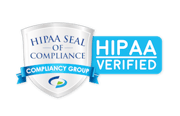Part 3: Alternative Payment Models and Enabling Technologies
By: Dr. Victor Lee
Inpart 1andpart 2of this series of discussions about value in healthcare, I provided an overview of payment models and drilled into a couple of high-profile programs that fall under category 2 according to theAlternative Payment Model Framework. In this third and final installment, I want to focus on alternative payment models (APMs)—an umbrella term for programs that fall into either category 3 or 4 of the APM Framework—and how certain technologies may support APM program goals.
Examples of category 3 APMs include accountable care organization (ACO) programs such as theMedicare Shared Savings Program (MSSP),Pioneer ACO Model, andNext Generation ACO Model. These are contractual agreements between payers and groups of healthcare providers who share responsibility and accountability for high quality care while judiciously managing costs for a pre-defined patient population. ACOs are typically formed by integrated delivery systems, multispecialty physician practices, physician-hospital organizations, independent practice associations, and virtual physician organizations.
There are also category 3 APMs that focus on transformation of primary care such asComprehensive Primary Care Plusand theIndependence at Home Demonstrationas well as episode-based payment initiatives such as theBundled Payments for Care Improvement Initiative,Comprehensive Care for Joint Replacement Model, and theOncology Care Model. Given that there is no single path to value-based care, different kinds of APMs are being tested in different care settings across the nation, and subsequent payment innovation models will be designed based on our observations of what worked well (and not so well). A list of current and past payment innovation programs from the Centers for Medicare & Medicaid Services (CMS) is available at theCMS Innovation Center.
There are a limited number of category 4 APMs such as thePioneer ACO Model(in years 3-5) andMaryland All-Payer Model. Unlike category 3 APMs which are still based on a fee-for-service (FFS) foundation with subsets of patients or venues of care tied to value-based payment, category 4 APMs link payments to the total cost of care in all venues for beneficiaries that are attributed to providers. Hence, providers must use scarce resources wisely while managing acute care, preventive care, and the overall health and wellness of their populations.
Clearly not all APMs are alike. In fact, the distinction between APMs has become evident when considering requirements under theMedicare Access and CHIP Reauthorization Act of 2015 (MACRA)legislation in which itsQuality Payment Program (QPP)features an Advanced APM track as previously discussed. As the name implies, not all APMs qualify for participation in the Advanced APM track. For example, MSSP has 3 tracks, where track 1 is one-sided with only upside shared savings potential (but no risk for losses), while tracks 2 and 3 are two-sided, meaning that there is the potential for both shared savings and losses. Under MACRA, only tracks 2 and 3 are considered Advanced APMs. The QPP website provides ashort list of Advanced APMsas well as adocumentthat describes eligibility criteria and rationale for inclusion or exclusion of a more comprehensive list of APMs. The following Venn diagram illustrates the relationship between different categories of APMs.
 Source: Centers for Medicare & Medicaid Services. Alternative Payment Model Design Toolkit. Last accessed: May 17, 2017.
Source: Centers for Medicare & Medicaid Services. Alternative Payment Model Design Toolkit. Last accessed: May 17, 2017.The diagram also highlights a set of APMs in the Physician-Focused Payment Model (PFPM) bucket. In contradistinction to top-down initiatives that come out of the CMS Innovation Center, PFPMs take a bottom-up approach by empowering providers to design their own APMs and propose them to the Secretary of the Department of Health and Human Services via thePhysician-Focused Payment Model Technical Advisory Committee (PTAC). PTAC was established by statute under MACRA, and its purpose is to broaden opportunities for clinicians to participate in advanced APMs. The PTAC website provides acumulative list of proposalsas well assubmissions that are currently (or were recently) open for public comment.
Regardless of the category of APMs, participating provider groups share some common general needs that differ from FFS models. Examples include:
- Provider accountability for both quality and cost of care
- Competency to forecast budget based on resource needs of attributed patients
- Ability to shift business practices from encounter-based health care to population health
Because these provider groups assume significantly more financial risk than in traditional volume-based reimbursement models, they must adapt to new ways of doing business. Namely, their ability to embrace certain enabling technologies is likely to facilitate their journeys to value-based care.
1)数据管理:虽然颁布Meaningful Uselegislation ushered in a wave of EHR adoption, it has become clear that this is not the finish line but rather the starting point for adding value to healthcare. While we are able to generate a large volume of data, usage of EHRs and other health IT systems come with data management challenges that are particularly important for APM participants to solve. For example:
- Clinical documentation is often incomplete or inaccurate (such as undocumented diabetic patients who have abnormal glycemic markers or are being treated with antidiabetic medications)—how can documentation be improved to identify eligible patients for disease management or population health programs?
- The number of local terminologies parallels the number of organizations who have implemented EHRs—how are these local terms aligned with terminology standards such as those proposed in theInteroperability Standards Advisoryto facilitate interoperability?
- While data is often structured and coded, it is estimated that a vast majority of clinical information resides in unstructured text—how can we unlock key information (such as a left ventricular ejection fraction) to facilitate analytics against a more complete clinical picture?
2) Data Insight: Assuming that organizations have implemented sound data governance practices to address the issues in item 1 above, a logical next step is to derive clinical awareness and insight from that data. Here are some examples of what can be done with health data to support APMs:
- Risk stratification for identification of sicker, at-risk, and emerging-risk patients to complement population health initiatives (for example, patients with multiple COPD hospitalizations may benefit from disease management or pulmonary rehabilitation programs to reduce readmissions)
- 实时针对病人的临床决策中rt to improve care quality (for example, eligible patients with systolic heart failure who are treated with aldosterone antagonists have lower rates of death and hospitalizations), to reduce unnecessary resource utilization, or to optimize compliance with electronic clinical quality measures prior to reporting
- Research the correlation between clinical and financial outcomes (for example, the authors ofthis study但书d that there is greater variation in spending across physicians than across hospitals and that higher spending was not correlated with better outcomes)
3) Data Sharing: Much of the waste that occurs in healthcare today results from the inability to access existing patient health data. APM participants must minimize duplicate testing and make clinical information available to all care providers to improve the efficiency of care. Technology solutions can facilitate data sharing in a number of ways.
- Most healthcare organizations either have multiple EHR systems or need to share data with other platforms (e.g., through a health information exchange)—how can data be normalized and/or de-duplicated to support such exchange?
- As patients transition across venues (e.g., hospital to rehabilitation facility) and to different providers (e.g., hospitalist to primary care provider), summaries of care can be exchanged through aContinuity of Care Document (CCD)or other means. Existing CCD implementation guidance supports both human readability as well as optional structured data for machine computability—how can we leverage both use cases to maximize the value of our health information technology investments?
- Patient engagement is an important success factor in APMs. Patients are generating their own health data through wearables, exchanging direct messages with their providers, and/or actively using patient portals to view, download, and transmit their health information. How can we leverage the momentum of their interest in their own health data and extend it to shared decision-making that drives their own health outcomes?
总之,价值关怀之路可以characterized by a taxonomy of reimbursement models in which each model category is defined by criteria that may result in financial gain and/or loss. Multiple payment models are being tested across providers, specialties, and venues of care, and we will iterate on future payment models based on lessons learned. Delivery system reform is facilitated by the efficient use of data, particularly as we progress to APMs. We must not just be good stewards of our data, we must turn that data into information and knowledge for both providers and patients to get the most value from our efforts—that is, to achieve the best patient health outcomes achieved per dollar spent.




